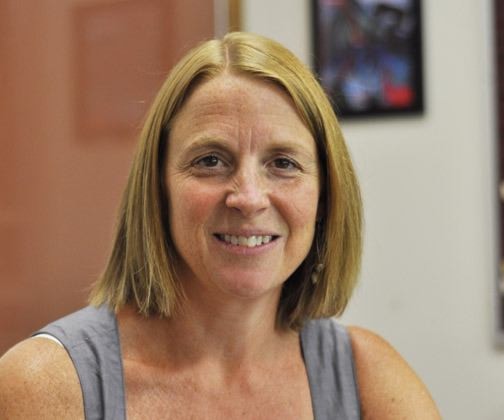Rossland Secondary will be starting off a new semester next week, and with the start of the year, there will be a lot of new innovations beginning as well.
One of those is the new approach the school will be heading into blended learning.
The new approach puts Rossland at the forefront of schools in the province leading new programs.
Admin and teaching staff are busy prepping the finishing touches on programs before students return on Tuesday.
The school also has a new principal this year, Karen Lavender took the reigns and projects a bright future for the school.
Lavender has worked in School District 20 since 1998 and lived in Rossland for 8 years.
Before that she was a classroom teacher for seven years in West Vancouver.
Two years ago, her and her family spent a year travelling the world, which she said was a great experience for her two children, who were 7 and 9 at the time, and gave them a chance to try out a active type of learning.
“We travelled for an entire year and we went to 27 countries,” she said. “We travelled around the world.”
At RSS, Lavender said the long term vision for the school is first to remain open.
She followed by saying the need to have an educational program in Rossland that meets all learner’s needs is next.
“We have a variety of kids in this community that have different needs,” she said. “We have a lot of kids who are high level dancers, skiers and other sports, as well as fine arts.”
So they are trying to offer a program to those kids that allows them to be competitive in their sport or activity, but at the same time be able to manage their education and be able to go on to their individual educational and academic goals as well.
On the other hand, she noted there are also a lot of kids who just want to go on to post-secondary in the trades or academics.
“So with a fairly small community we really need to be able to provide a diverse and
varied program offering for them, so that with the small numbers we can still offer everything to all the kids that we have,”
RSS is trying to fill all those niches, which can sometimes be difficult in a small community, as traditionally, staffing is based on the number of kids signed up for courses and number of students in the school..
“So by changing the way we do things here we are allowing ourselves to still provide the wide variety of subjects that kids want in the humanities, math and science programs,” she said.
Lavender explained that in the past few years, teachers in the 6 and 7 classes have moved to more inquiry based learning, with some aspects that use online sources, as well as local knowledge.
So those classes will mostly stay the same, with students arriving at school, heading to class and learning from their teacher. The difference is that there is less textbook and more active learning happening. Lavender noted that it is still very structured.
At grade 8 and 9, there is still teacher and classroom specific learning.
“But we’re taking the learning to a different level, we now have what we call blended courses,” she said. That includes online learning, small group work, large group work and class-based work.
“So by the time students get to grade 10 they have a very good idea of what a blended course looks like,” she said. “(Students) know how to take courses online, they know how to do inquiry based projects, they know how to work in small and large groups.”
In grade 10, students get more freedom, no longer working within a bell schedule. They can decide on how many or how few courses they want to take and how they will pace themselves.
Teachers will be in resource areas to help students.
Lavender said there are a number of reasons to make the switch. One is that they are being pushed, as there aren’t many student in grades 10,11 and 12, so there wouldn’t be much opportunity to have an assortment of classes in the traditional sense. RSS teachers have also been working to delve into new ways of doing things at the school for the past few years as well.
“It will take a couple of months for people to really understand what we are doing here, because this is new, it’s not like we’re copying what others are doing in some other school in the province,” she said, adding that most people who came through the education system know only one type of learning, the same one that’s been taught for 50 years.
The new program allows students to work at their own pace.
There is also an advisory program where student will track their progress through a shared Google Doc with the help of a teacher. So students, parents and teachers will be able to track the progress and keep to a schedule.
For more info on blended learning at RSS go to rssblendedlearning.wordpress.com.
